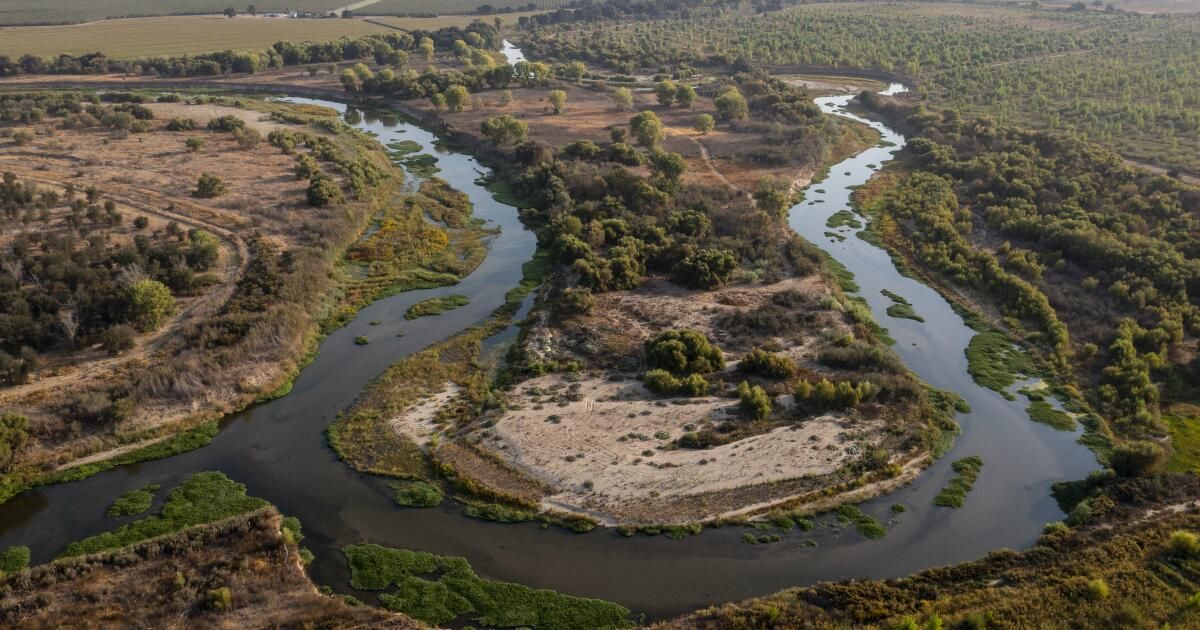On June 12, California will open its first new state park in nearly a decade, setting aside 1,600 acres near the confluence of the Tuolumne and San Joaquin rivers in the San Joaquin Valley.
The park will give visitors a taste of what the valley's waterways were like before the arrival of agriculture, but it will be some time before the site offers many activities. Or it has a name.
The site is known as Dos Ríos, but state officials have not yet given it an official name. It is located eight miles west of Modesto, among dairy farms and almond orchards, and is considered the largest public-private floodplain restoration project in the state.
State parks officials said that starting June 12, visitors will be able to take accompanied hikes in some areas of the property and use about a dozen newly placed picnic tables and shade structures.
But many activities will have to wait. Officials are still seeking public input and making plans for other possible activities, such as biking, swimming, fishing and non-motorized boating.
The new state park at the former Rancho Dos Ríos outside Modesto, set to open June 12, includes an oak forest.
(Brian Bear/California State Parks)
“We're still growing,” said park manager Paige Haller. Haller said the park would open with three full-time interpreter employees and would be open from 7 a.m. to 5 p.m., Fridays, Saturdays and Sundays. Visitors will be able to book guided tours, Haller said, on a soon-to-be-released park website.
There are temporary sanitary facilities. A prefabricated, trailer-sized “welcome center” will open by the end of the year, eventually followed by a larger visitor center.
Once a dock is installed on the park's main pond, Haller said, “we're planning to have non-motorized boating” and fishing, perhaps by the end of 2025.
There will be no entrance fee at first, Haller said, adding, “We hope to see that happen in the next few years.”
The property, formerly known as Rancho Dos Ríos, includes eight miles of river; a long oxbow-shaped pond; A barn; several agricultural warehouses that will be adapted to new uses; and about 20 miles of ranch roads, many of which will likely be converted to trails.
The property operated as a dairy and cattle ranch for decades, with a series of berms separating the rivers from the rest of the land, before it was acquired in 2012 by the California conservation nonprofit River Partners. River Partners planted vegetation, removed berms in 2018 and began transferring the property to the state in 2023.
An analysis of the property by River Partners found species including riverine woodrat, Swainson's hawk, at least Bell's vireo, yellow warbler, sandhill crane and “a complete suite of Neotropical migratory songbirds.” In waters near the restoration site, River Partners has documented spawning Chinook salmon, rainbow trout, and white sturgeon. The park neighbors the San Joaquin River National Wildlife Refuge.
Prior to this, the last new state park unit to be unveiled was eastern Kern County's Onyx Ranch State Vehicular Recreation Area, which opened in November 2014. Dos Rios Park will be the 281st unit in a system that It covers nearly 1.4 million acres and includes nearly 15,000 campsites and 3,000 miles of hiking, biking and equestrian trails.
The name of Dos Ríos Park will be determined and approved at upcoming meetings of the California State Parks and Recreation Commission. Their next meetings are June 11 and September 11. Governor Gavin Newsom spoke at the Dos Ríos site on Monday as part of the Earth Day celebration.
The Tuolumne and San Joaquin rivers transport melted snow from the Sierra to the agricultural areas of the Central Valley. The 366-mile San Joaquin River, the longest in the valley, eventually empties into the Pacific Ocean through Suisun Bay and San Francisco Bay.












